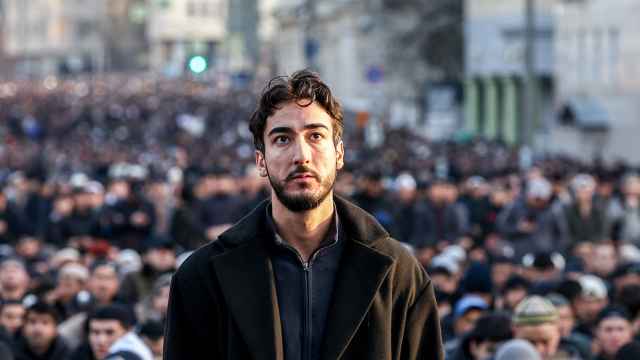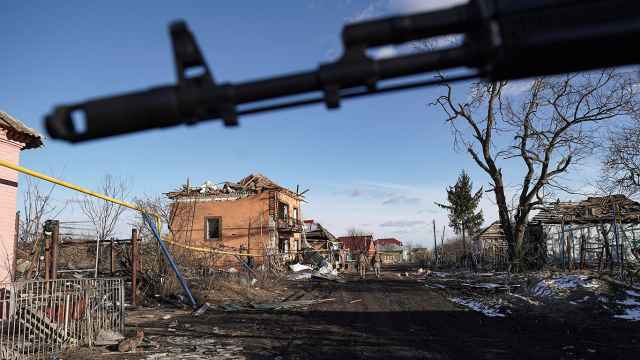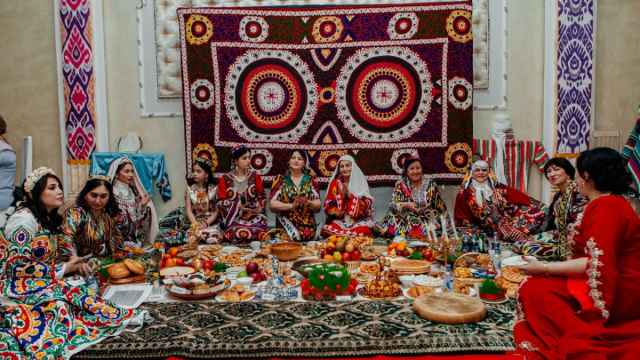Architectural Treasures of Moscow: St. Basil's Cathedral
This magnificent church on Red Square is a symbol of Moscow and Russia.
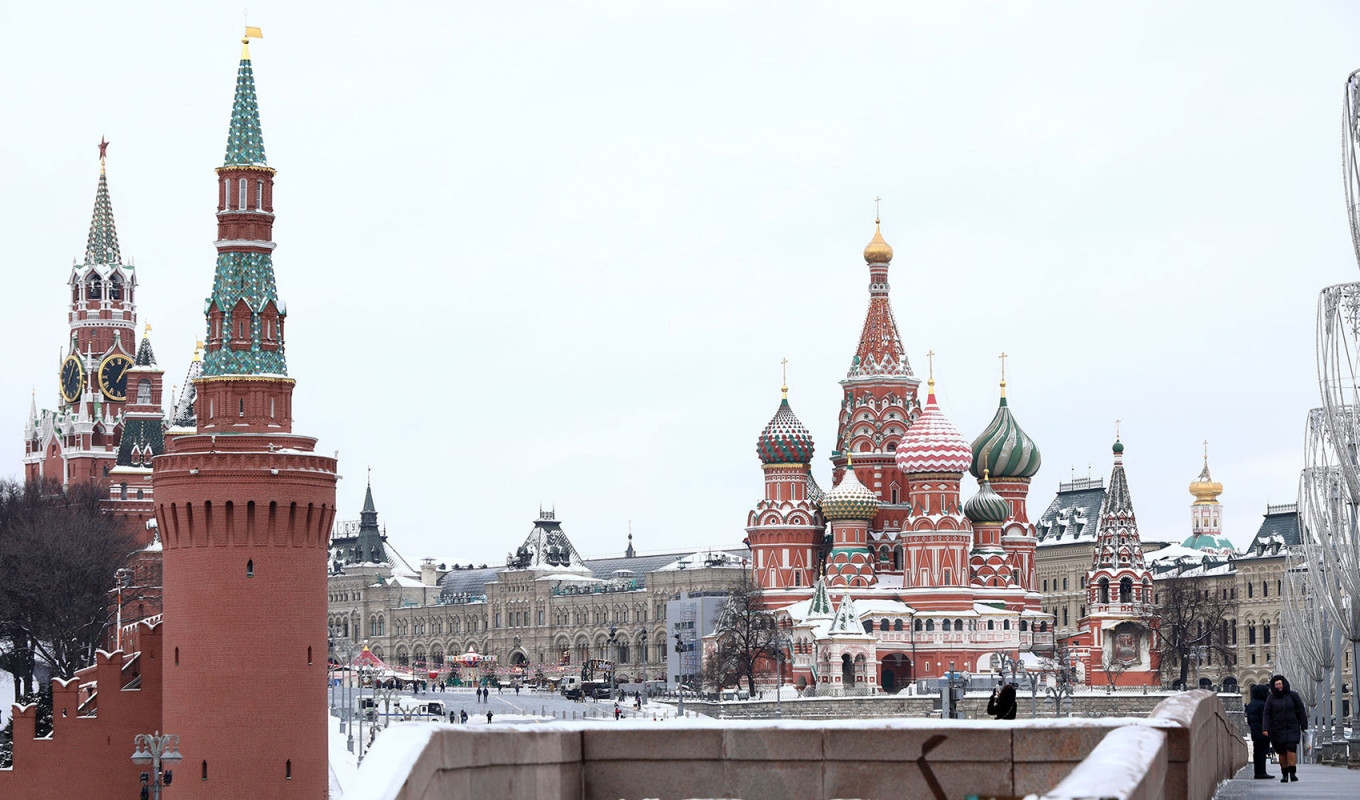
In 2021 St. Basil’s Cathedral celebrated its 460th birthday.
It was built by order of Ivan the Terrible to honor his military victory in the Russian-Kazan war. Its full name is the Cathedral of the Intercession of the Most Holy Mother of God on the Moat — a reference to the moat that flowed along the Kremlin walls, joining the Moscow River on one side and the Neglinnaya River on the other side. The moat was filled in only in 1814.
Unlike Western churches, the cathedral is not one large space. At first the cathedral had nine chapels, each under one of the nine cupolas.
It was built by order of Ivan the Terrible to honor his military victory in the Russian-Kazan war. Its full name is the Cathedral of the Intercession of the Most Holy Mother of God on the Moat — a reference to the moat that flowed along the Kremlin walls, joining the Moscow River on one side and the Neglinnaya River on the other side. The moat was filled in only in 1814.
Unlike Western churches, the cathedral is not one large space. At first the cathedral had nine chapels, each under one of the nine cupolas.
Andrey Gordeyev for MT
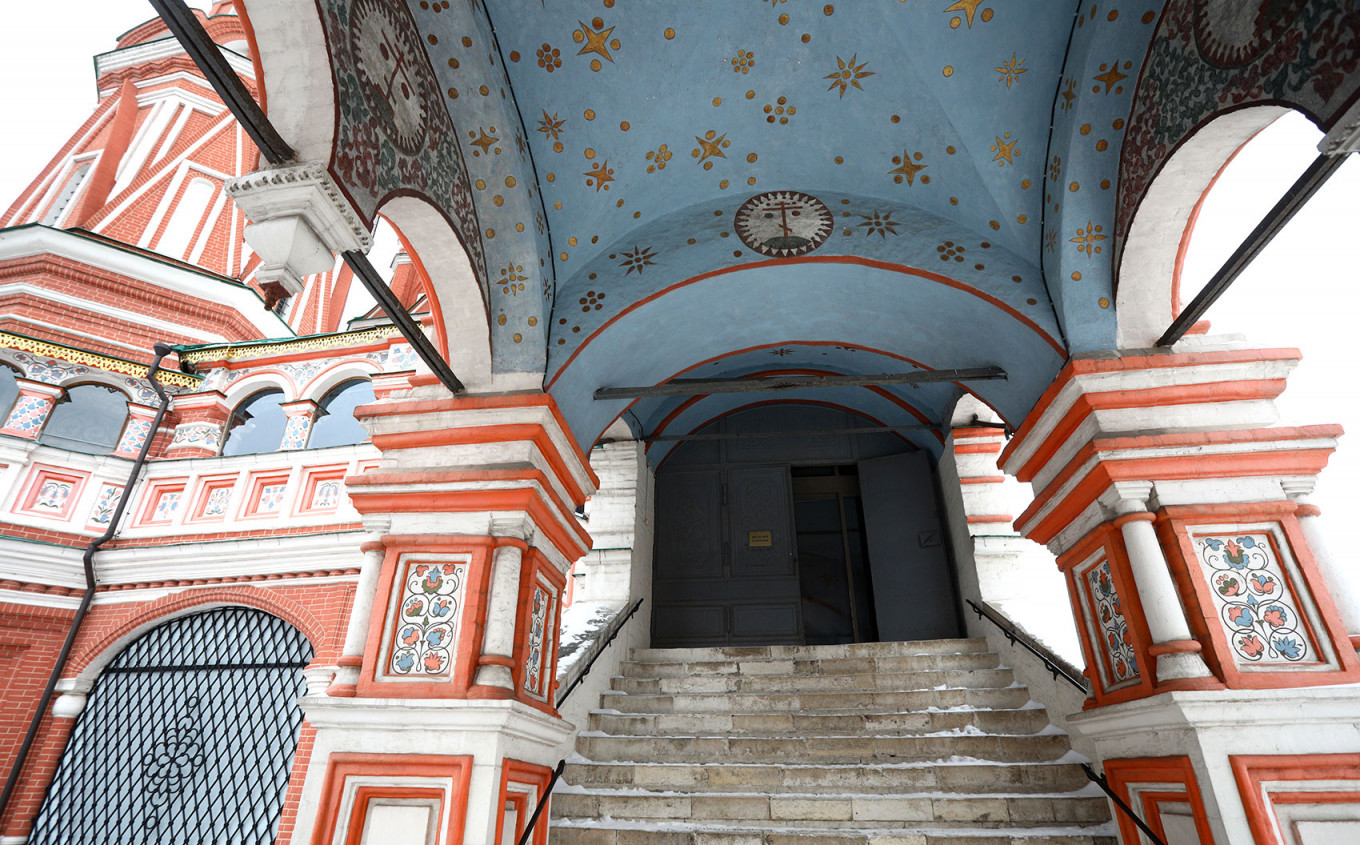
The cathedral was the tallest structure in Moscow until 1600 when the Ivan-the Great Bell Tower inside the Kremlin was rebuilt.
One of the cathedral’s distinctive architectural characteristics is that each of the four sides looked like it could be the main entrance. It didn’t matter which direction a visitor or churchgoer came from: no façade looked like the back or side.
One of the cathedral’s distinctive architectural characteristics is that each of the four sides looked like it could be the main entrance. It didn’t matter which direction a visitor or churchgoer came from: no façade looked like the back or side.
Andrey Gordeyev for MT
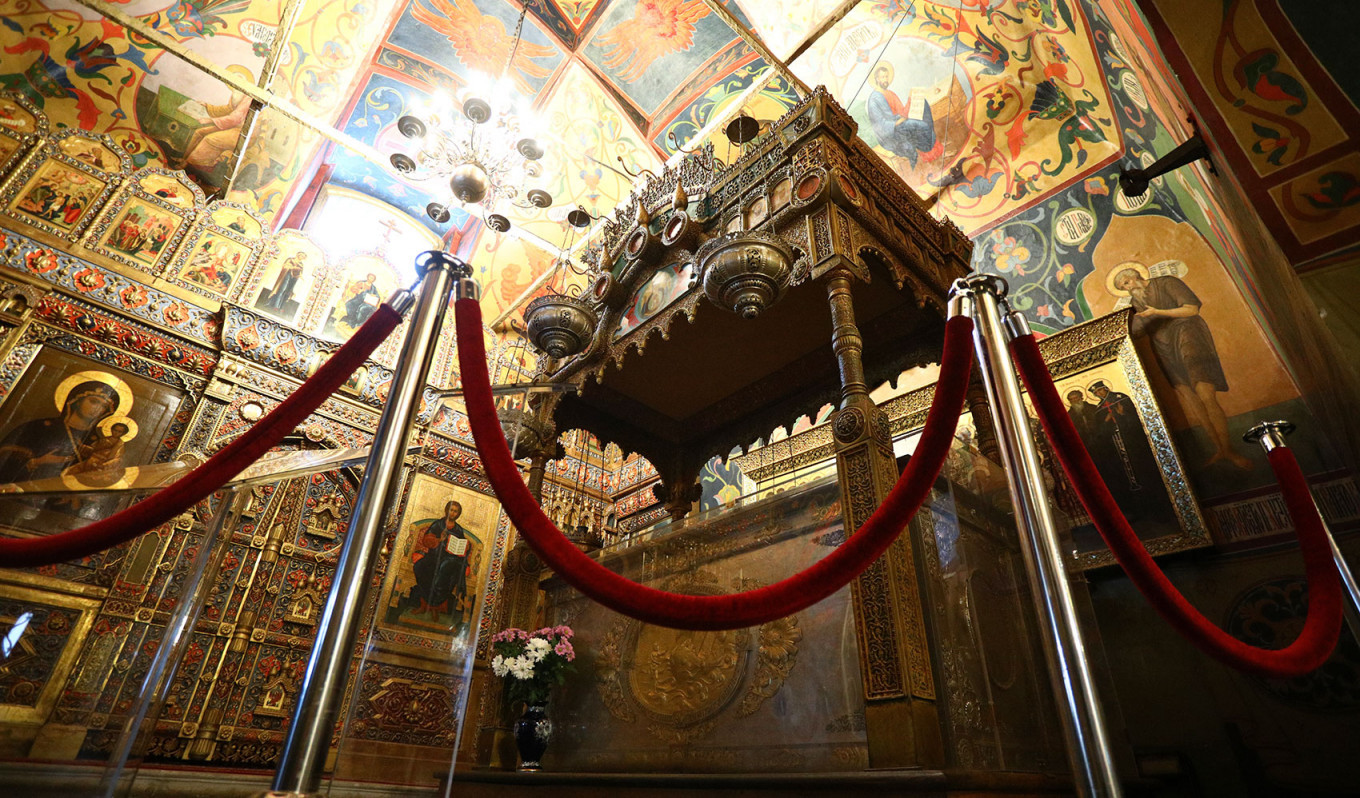
The cathedral began to be called St. Basil’s at the end of the 16th century after a much-loved holy man called Basil was buried in the tenth chapel, which was built on to the cathedral especially for him.
Over time churchgoers began to visit this chapel more than the others, and people would say they were going to “St. Basil.” Now the main entry to the cathedral is on the side where the chapel is.
St. Basil’s chapel is the only chapel in the cathedral that is heated, and services are held here all year round.
Over time churchgoers began to visit this chapel more than the others, and people would say they were going to “St. Basil.” Now the main entry to the cathedral is on the side where the chapel is.
St. Basil’s chapel is the only chapel in the cathedral that is heated, and services are held here all year round.
Andrey Gordeyev for MT
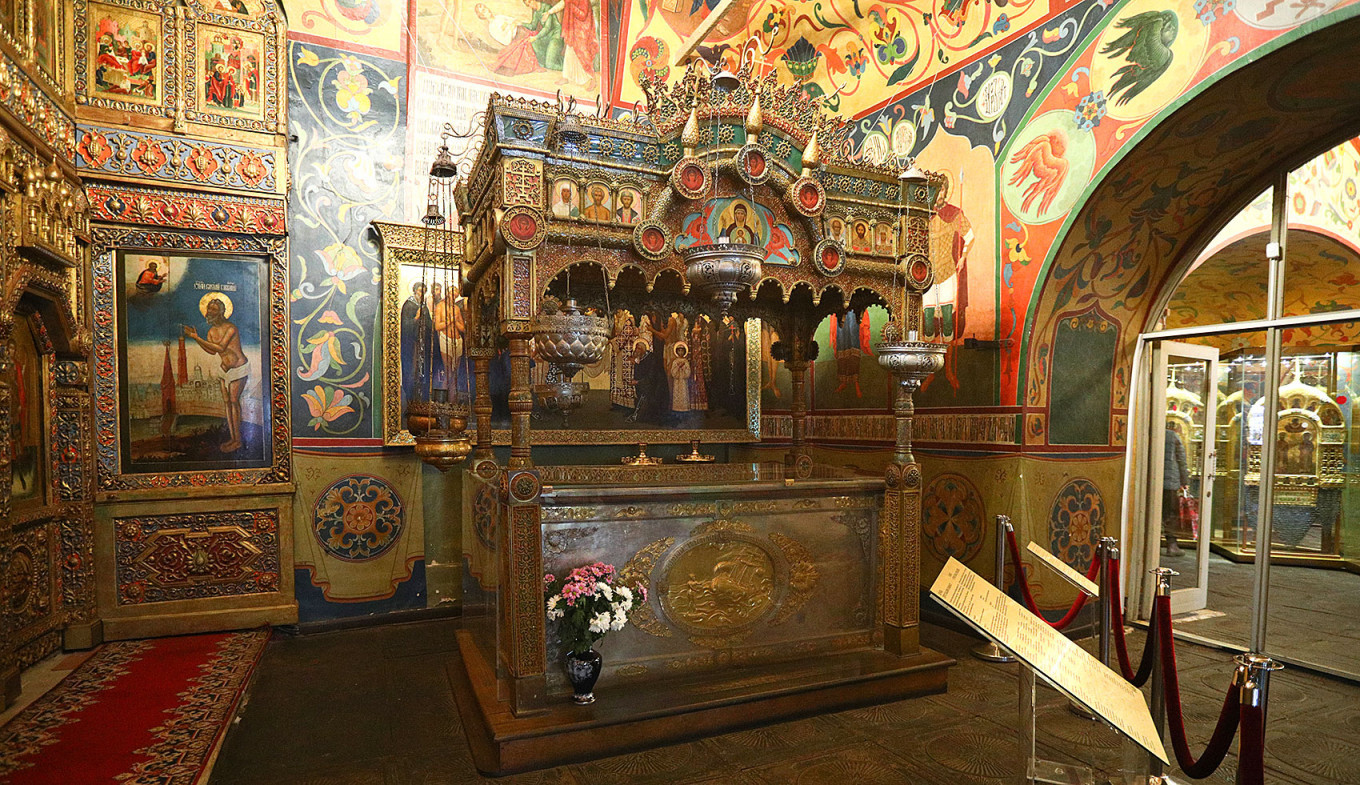
The chapel of St. Basil was added to the cathedral in 1588, built over the his grave. Today there is a shrine to St. Basil, and his remains still lie under the earth beneath.
The interior of the chapel that we see today was done at the end of the 19th century during restoration work to celebrate the 350th anniversary of the cathedral. Some of the icons tell the story of the spiritual path of St. Basil and how he went without clothing all year round. It is believed that he was always naked: from the age of 16 the holy man lived on Red Square and never wore clothing until his death at age 88. One of the icons (to the left of the shrine) is also a historical document: behind the figure of St. Basil is a panorama of Moscow with the moat that figures in the name of the cathedral.
The interior of the chapel that we see today was done at the end of the 19th century during restoration work to celebrate the 350th anniversary of the cathedral. Some of the icons tell the story of the spiritual path of St. Basil and how he went without clothing all year round. It is believed that he was always naked: from the age of 16 the holy man lived on Red Square and never wore clothing until his death at age 88. One of the icons (to the left of the shrine) is also a historical document: behind the figure of St. Basil is a panorama of Moscow with the moat that figures in the name of the cathedral.
Andrey Gordeyev for MT
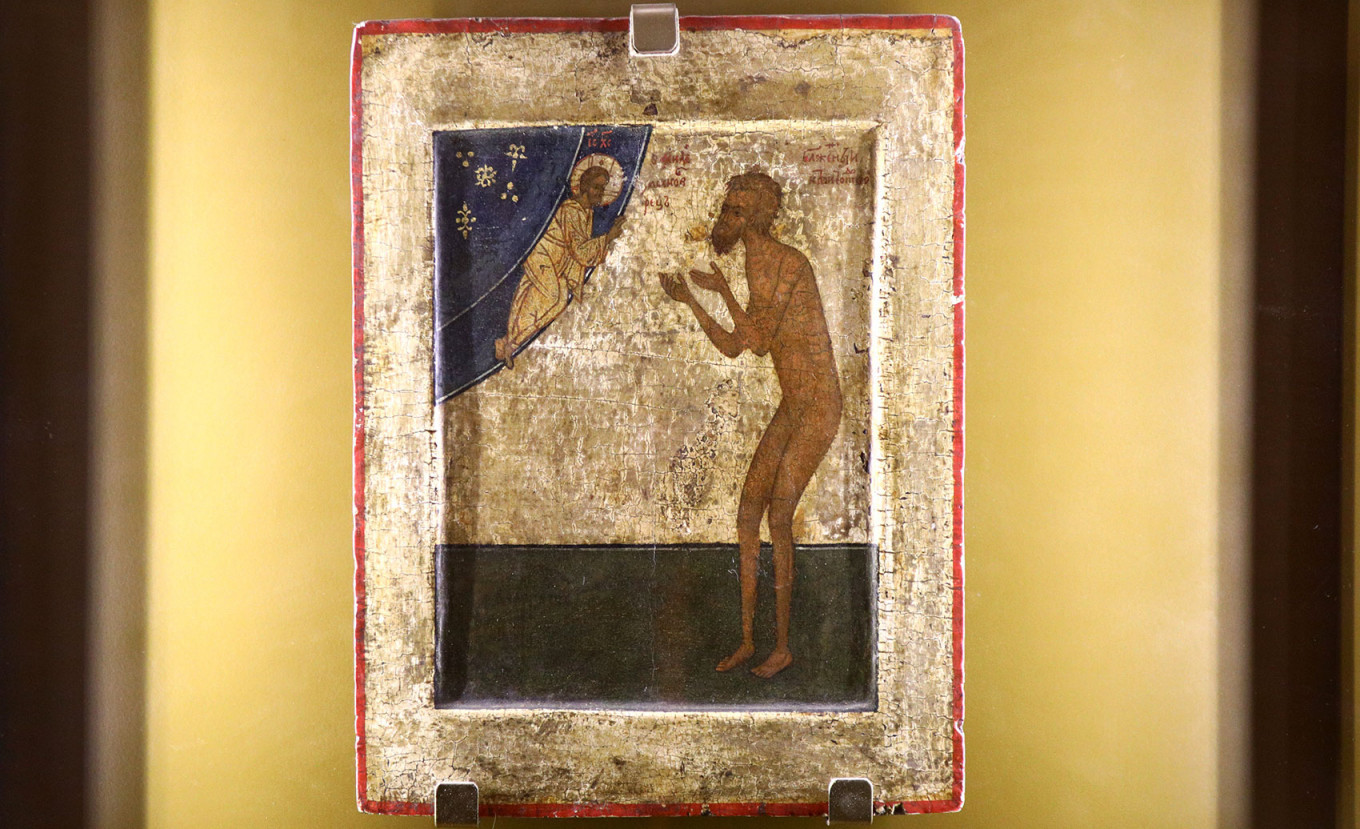
There is another unique icon of St. Basil done at the end of the 16th century. It is believed to be the first icon of the saint done after he was canonized in 1588, that is, it was painted just a few years after his death.
In the icon St. Basil is completely naked. This is one of the last iconic depictions of holy man who went unclothed; by order of Peter the Great, all saints were henceforth depicted covered with cloth.
In the icon St. Basil is completely naked. This is one of the last iconic depictions of holy man who went unclothed; by order of Peter the Great, all saints were henceforth depicted covered with cloth.
Andrey Gordeyev for MT
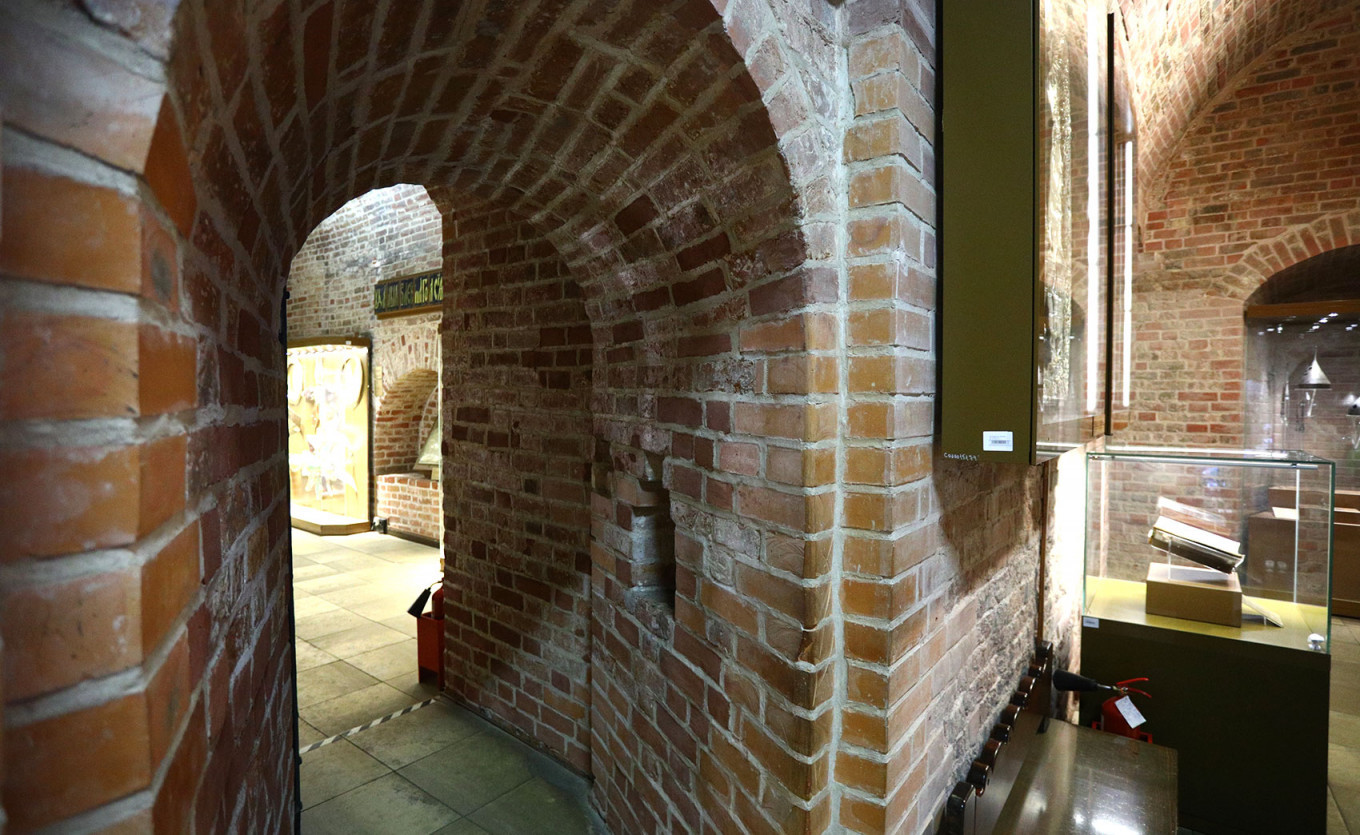
From the chapel of St. Basil visitors descend into the cathedral’s basement. During the time of Ivan the Terrible, it was where the tsar kept his treasures. Later wealthy Muscovites stored their riches here.
During the Soviet period when the cathedral was a museum, the basement was used for the administrative offices.
During the Soviet period when the cathedral was a museum, the basement was used for the administrative offices.
Andrey Gordeyev for MT
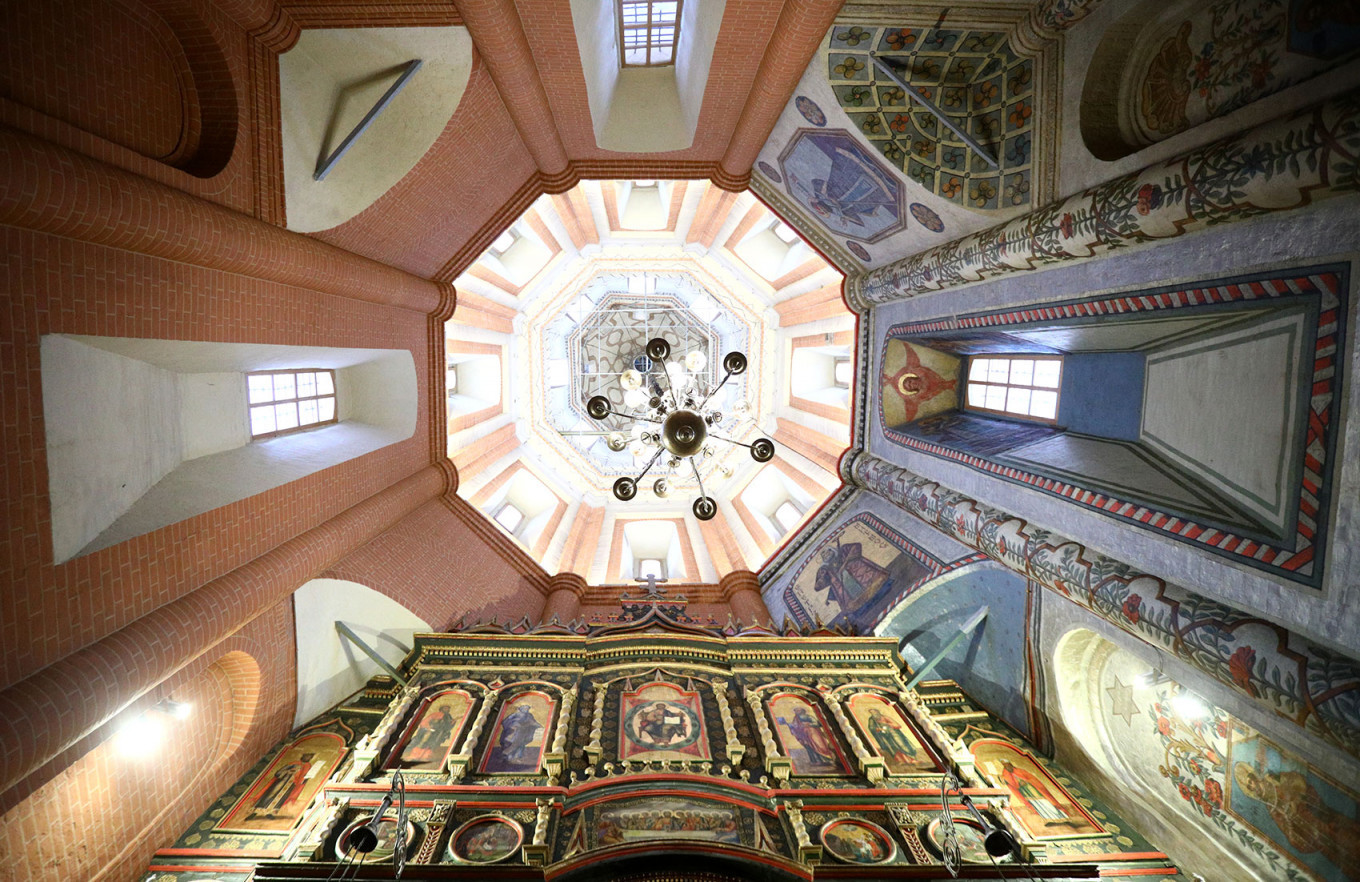
From the lower level, visitors climb up a secret staircase to the second-floor level. When the cathedral was built, churchgoers entered it by a staircase on the exterior.
The secret staircase leads directly into the Church of the Intercession: the tallest chapel in the cathedral: 47.5 meters (almost 160 feet) from the floor to the top of the cupola. This is the only tent-shaped spire in the cathedral.
Services are held in the chapel on the Feast Day of the Intercession.
The secret staircase leads directly into the Church of the Intercession: the tallest chapel in the cathedral: 47.5 meters (almost 160 feet) from the floor to the top of the cupola. This is the only tent-shaped spire in the cathedral.
Services are held in the chapel on the Feast Day of the Intercession.
Andrey Gordeyev for MT
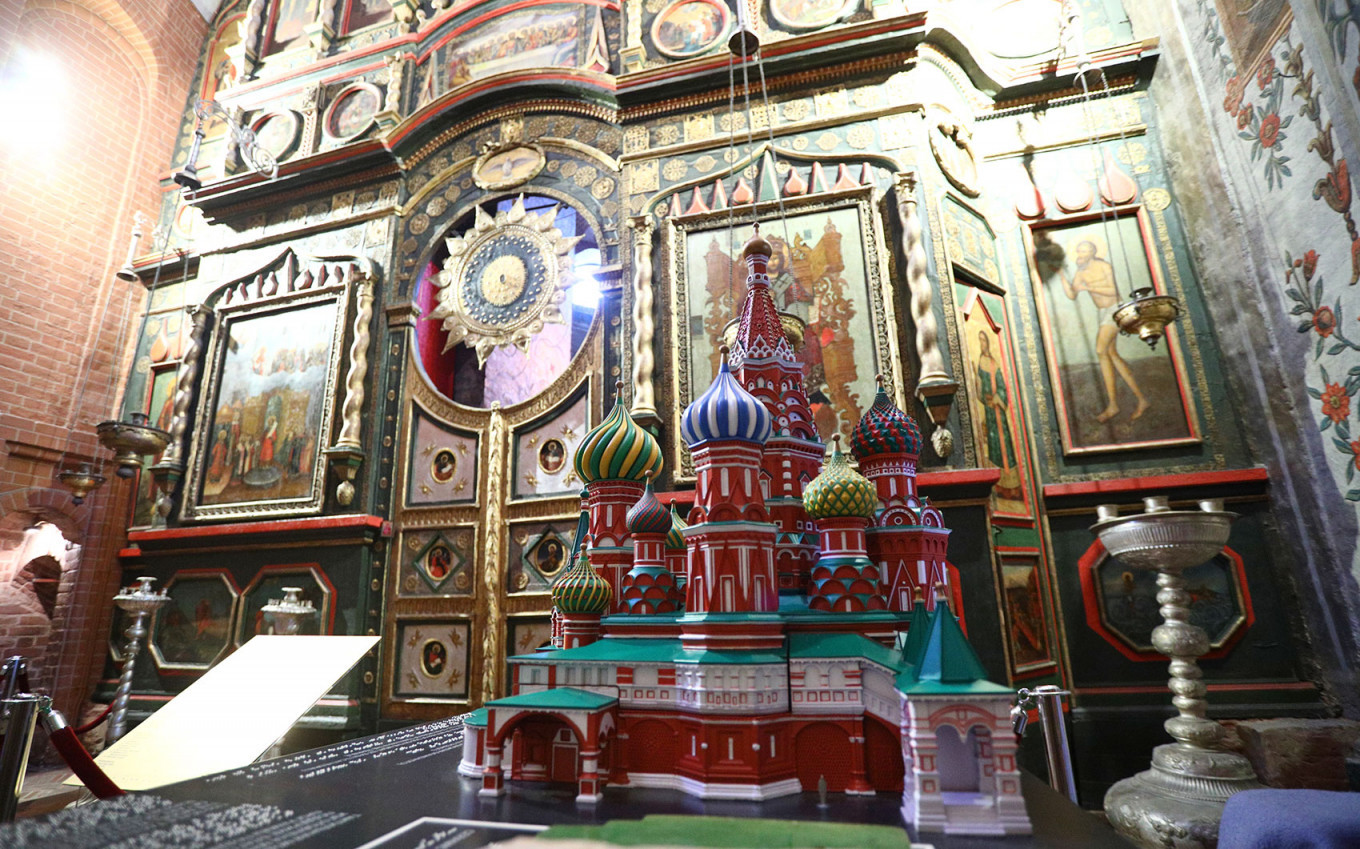
Near the top of the Church of the Intercession restorers found writing that testified to the exact date the cathedral was consecrated: June 12, 1561. This date is celebrated as the “birthday” of the cathedral.
In this chapel you can also examine the architectural details of the cathedral in miniature.
In this chapel you can also examine the architectural details of the cathedral in miniature.
Andrey Gordeyev for MT
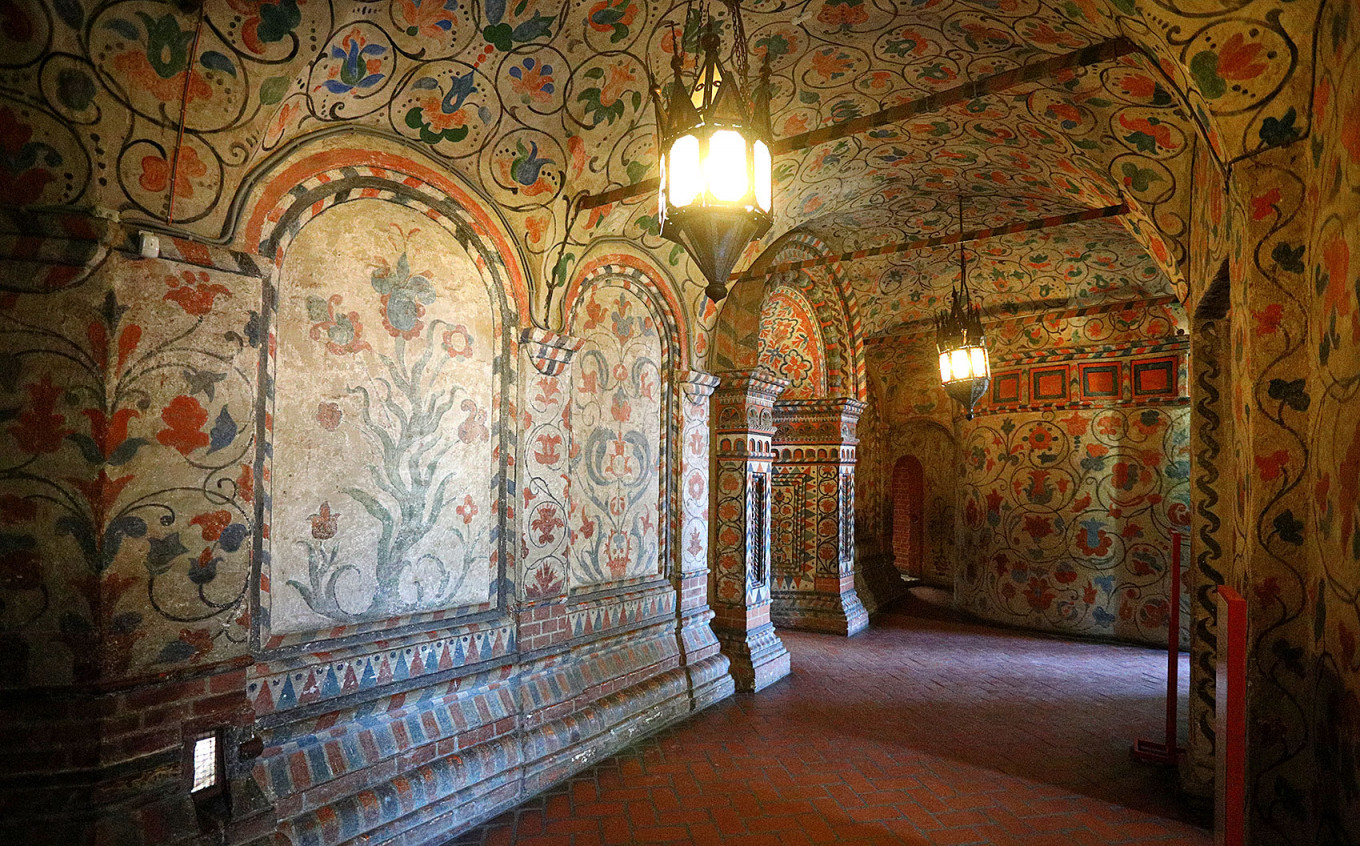
Eight chapels — four large ones at axis points and four smaller ones in between them — surround the central Church of the Intercession. Each chapel leads to the ones on either side. A gallery runs around the exterior.
Historians have not come to a definite conclusion about who exactly built the cathedral — Russians or Italians. No documents with exact information have been found. But most experts believe that the cathedral could not have been built without assistance from Italian builders. The brick used to build the cathedral was a new construction material for Rus, and at least in the first stage of its use Russian builders needed to learn how to use it from their Italian colleagues.
Historians have not come to a definite conclusion about who exactly built the cathedral — Russians or Italians. No documents with exact information have been found. But most experts believe that the cathedral could not have been built without assistance from Italian builders. The brick used to build the cathedral was a new construction material for Rus, and at least in the first stage of its use Russian builders needed to learn how to use it from their Italian colleagues.
Andrey Gordeyev for MT
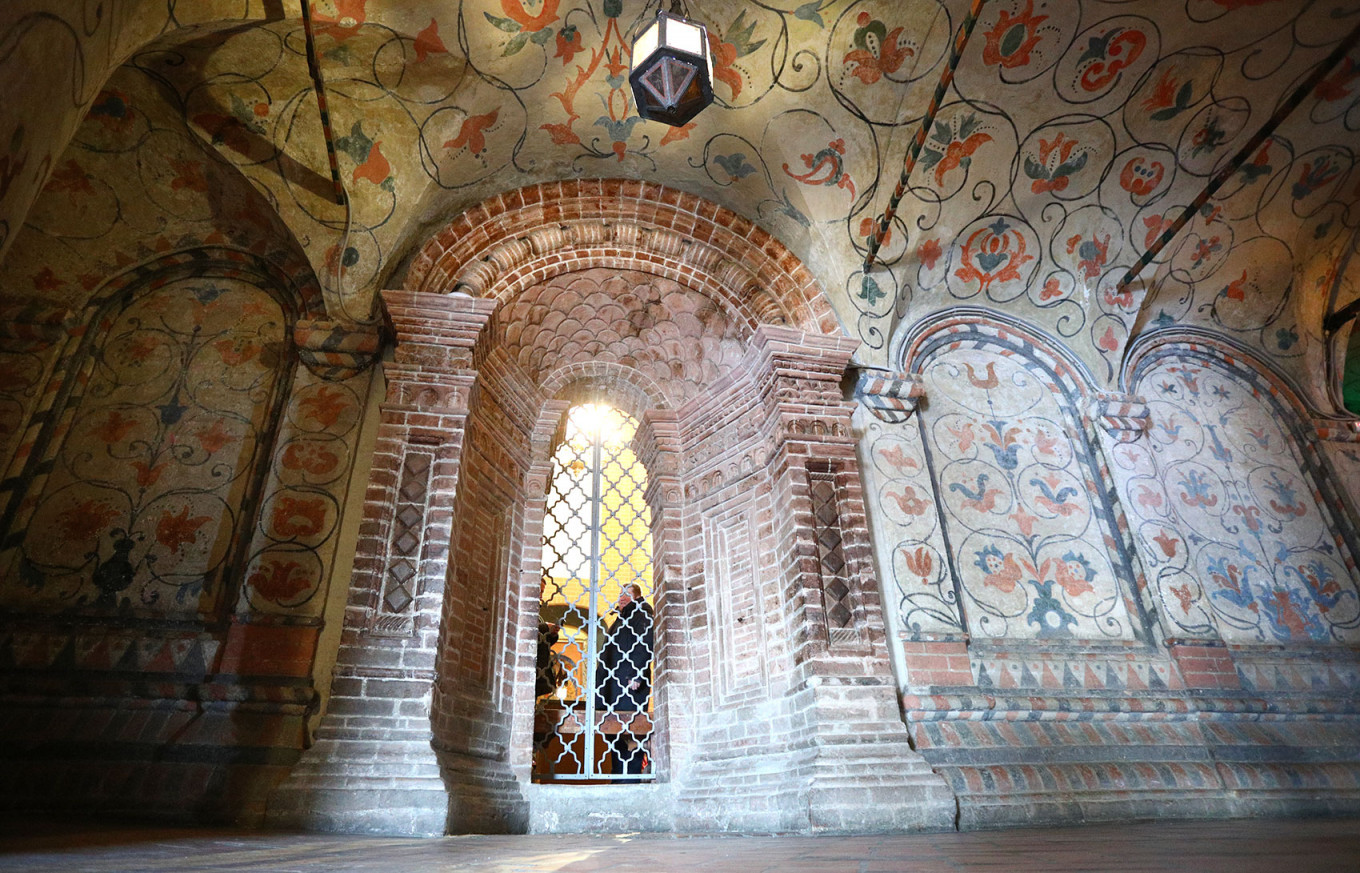
Over the long life of the cathedral, the ornamentation on the walls has changed many times.
Virtually every period of painting is extant, from the very first murals done during the time of Ivan the Terrible to imitate brickwork — bricks were rare and expensive at the time and not used everywhere — to the brightly colored vegetal ornamentation done with oil paint during the time of Catherine the Great.
Virtually every period of painting is extant, from the very first murals done during the time of Ivan the Terrible to imitate brickwork — bricks were rare and expensive at the time and not used everywhere — to the brightly colored vegetal ornamentation done with oil paint during the time of Catherine the Great.
Andrey Gordeyev for MT
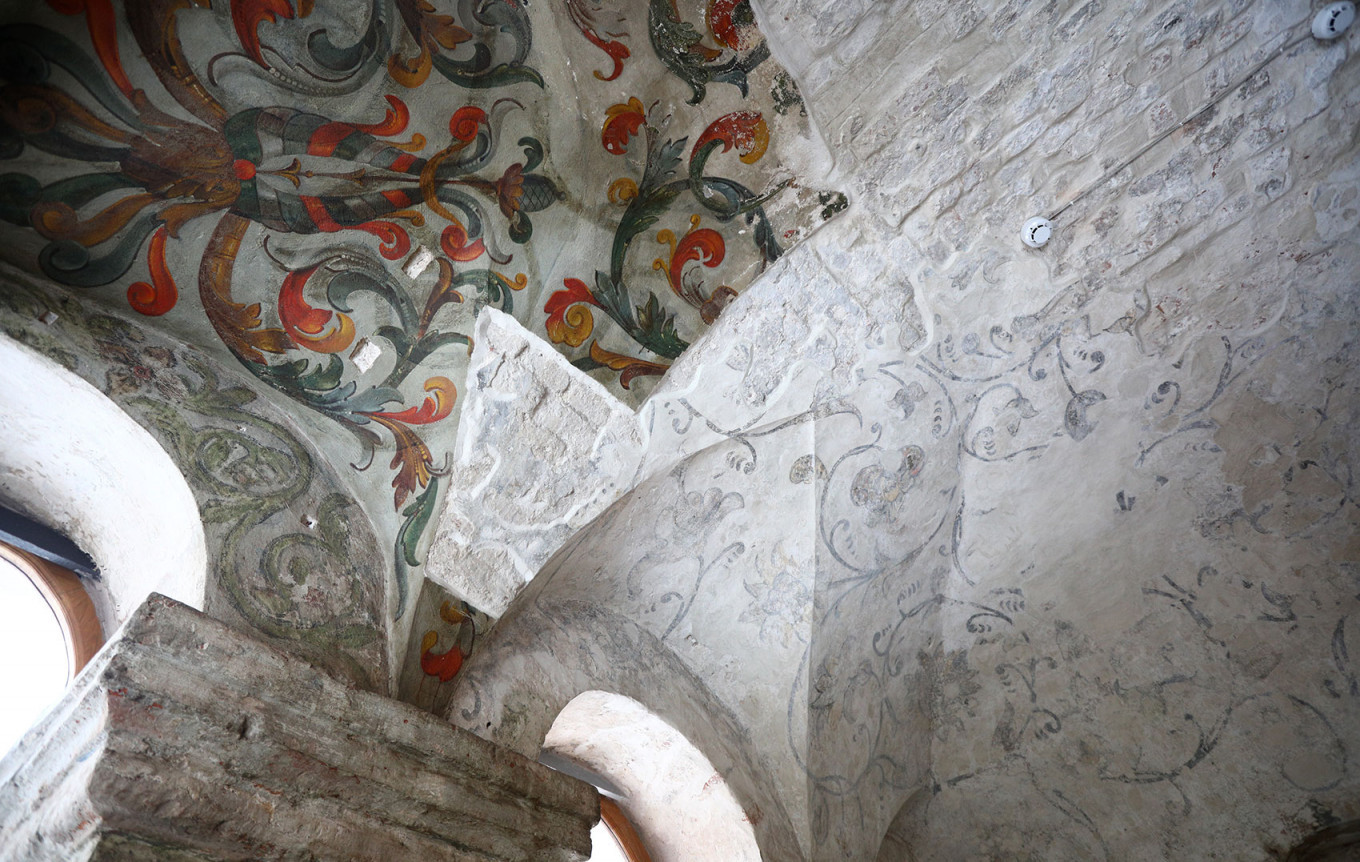
In several places the restorers intentionally left different versions of the murals painted on the walls of the cathedral, from the original ornamentation to painting done centuries later.
Andrey Gordeyev for MT
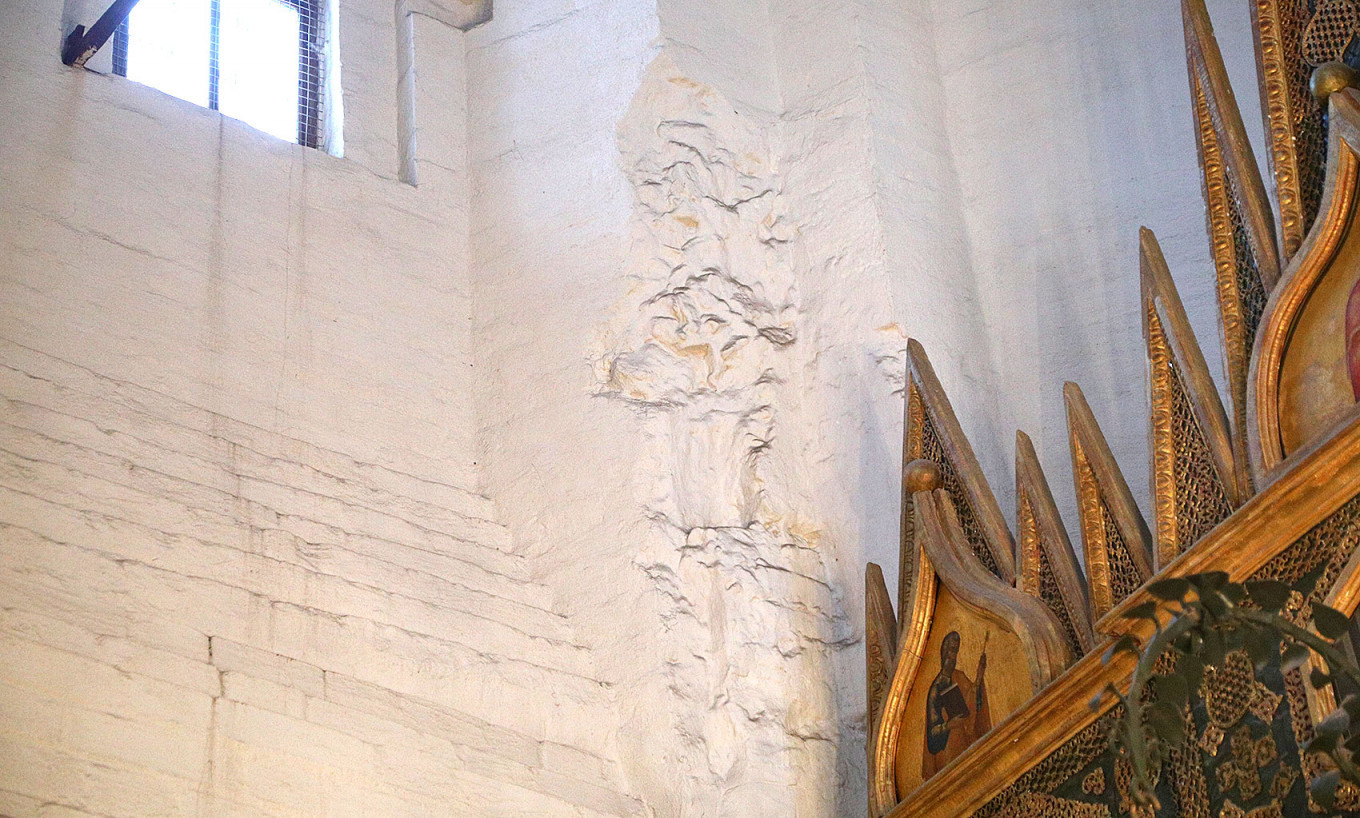
Another sign of the times that the restorers decided to retain is the damage to the wall of one of the chapels. It appeared after shelling during the 1917 Revolution.
Andrey Gordeyev for MT
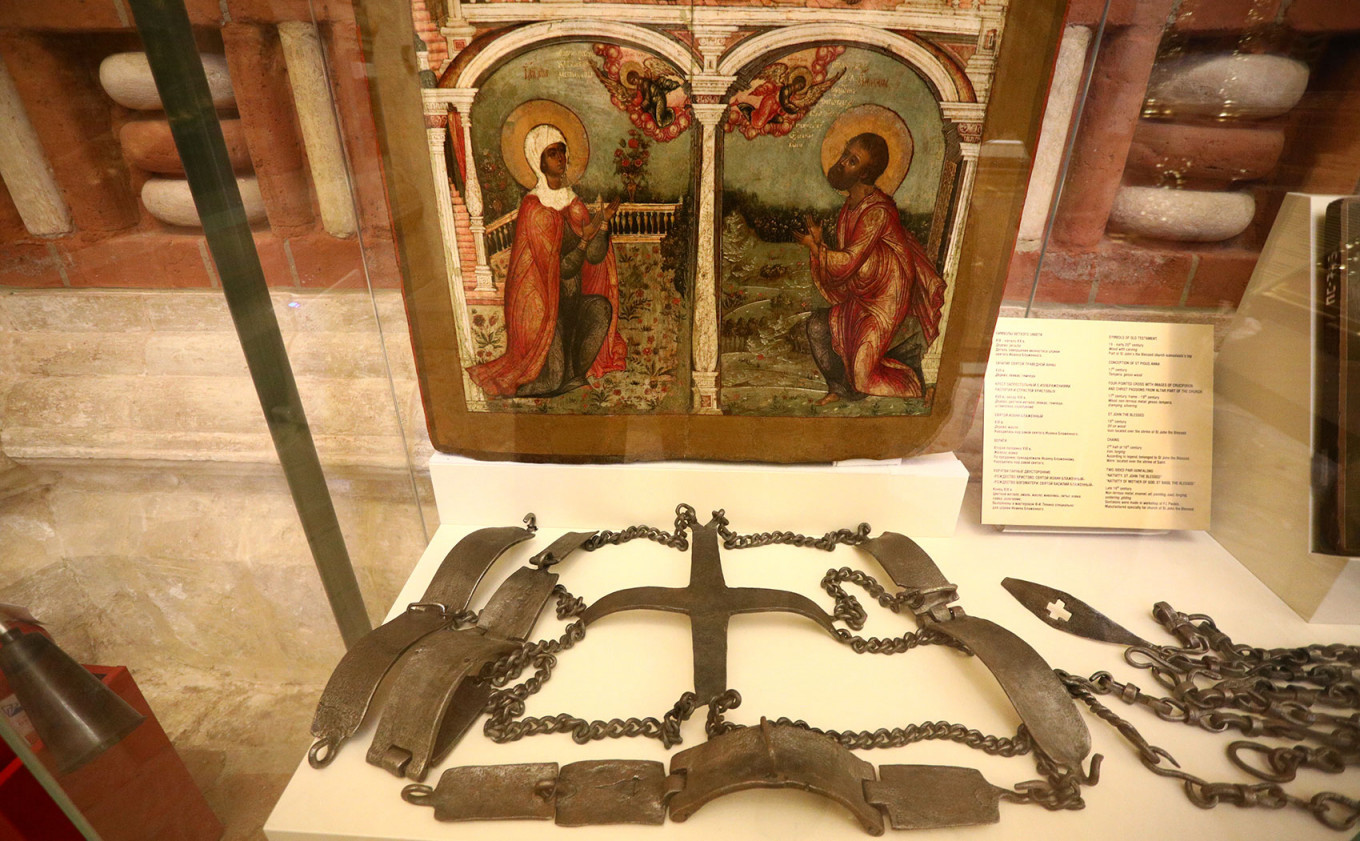
Among the relics in the cathedral are shackles similar to those worn by St. John, a holy man who was a younger contemporary of St. Basil. The eleventh chapel, added to the cathedral in 1672, is dedicated to him.
Some holy men and women wore shackles under their clothing, hidden so that others would not see their private act of penance. The shackles weighed several dozen kilos, and it is believed the St. John wore shackles that were half his body weight and that he only removed them before his death in 1589.
Some holy men and women wore shackles under their clothing, hidden so that others would not see their private act of penance. The shackles weighed several dozen kilos, and it is believed the St. John wore shackles that were half his body weight and that he only removed them before his death in 1589.
Andrey Gordeyev for MT
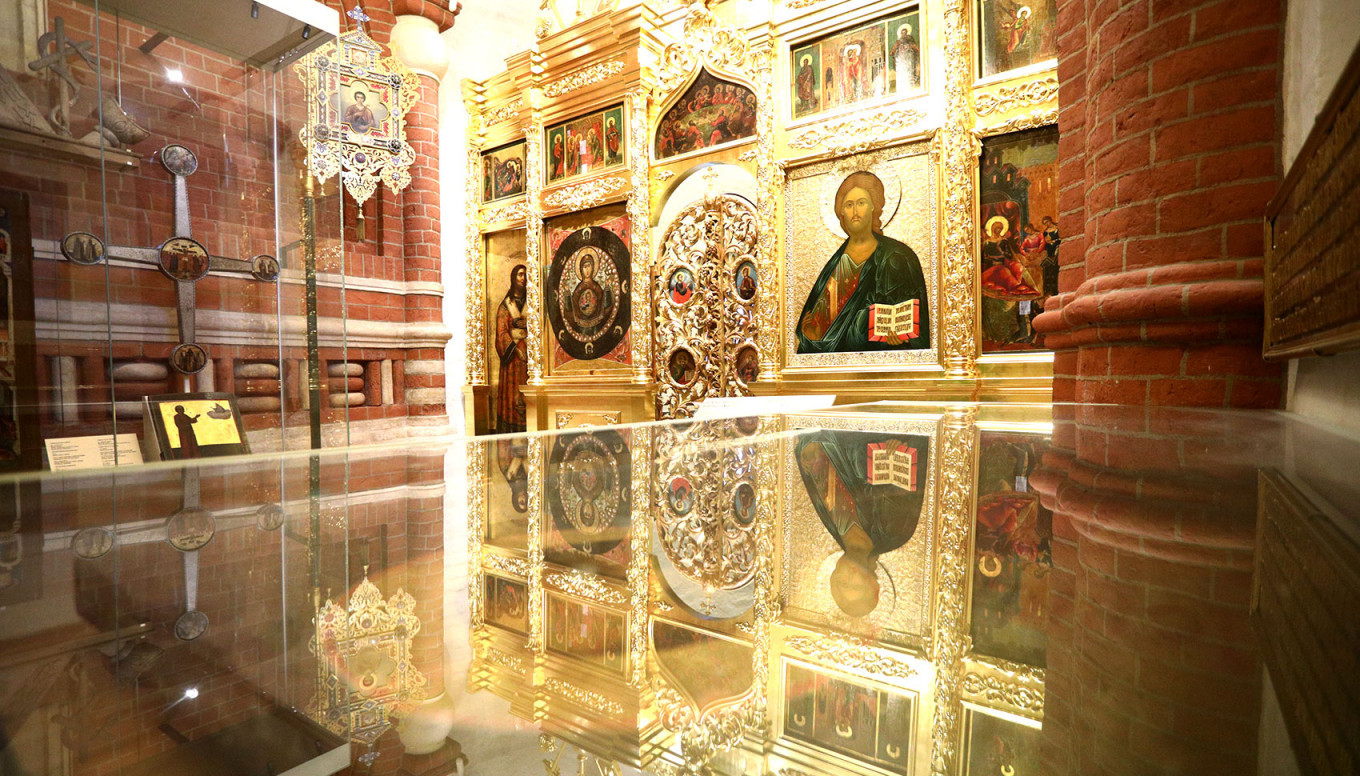
The Church of St. John, who died in 1589, was built on to the cathedral as the final resting place of the saint. It is the only chapel without a cupola. Like the remains of St. Basil, the remains of St. John are under ground, and there is a shrine above them.
Andrey Gordeyev for MT
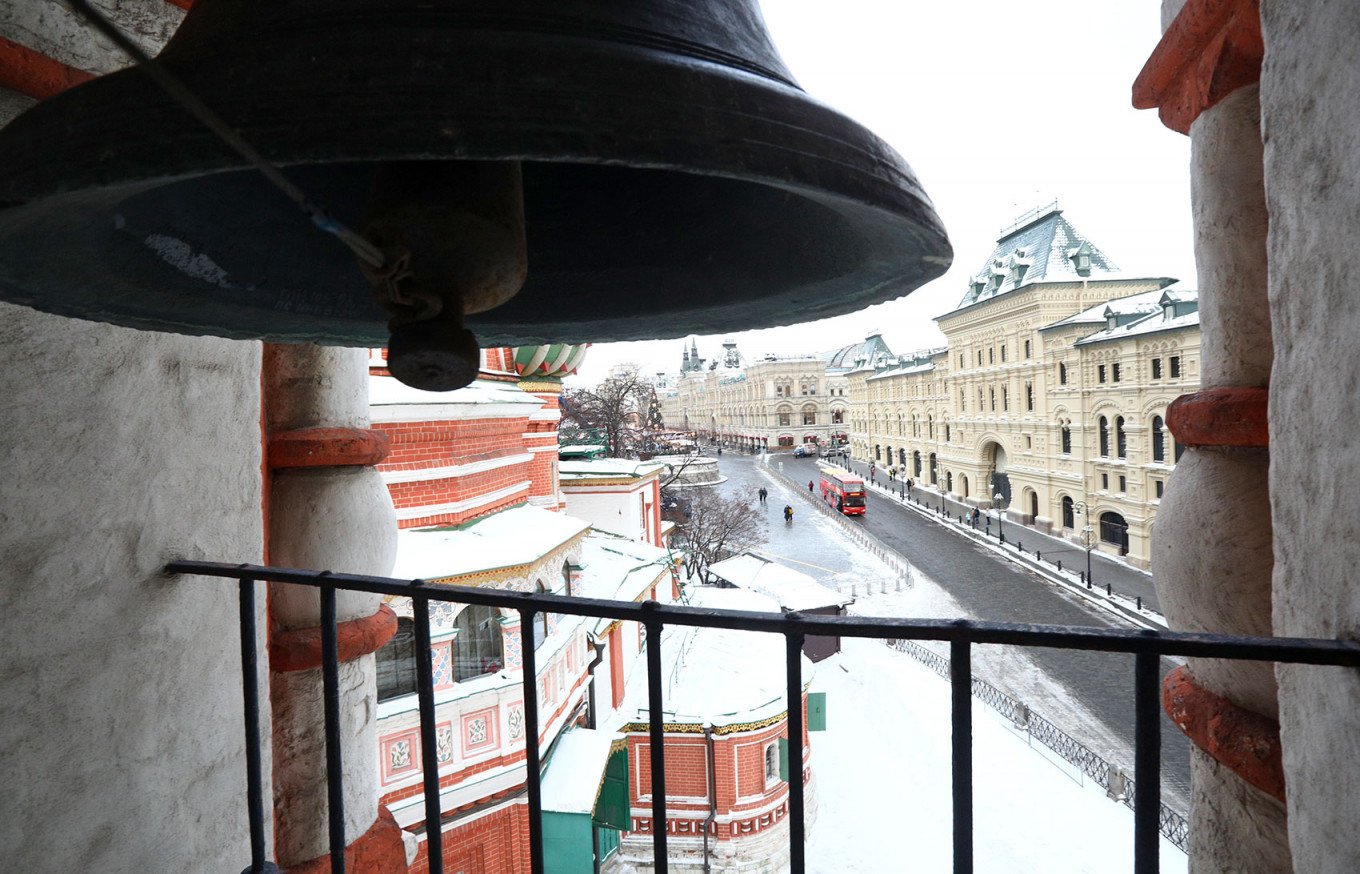
The eleventh cupola is the bell tower built in the 1680s.
In 1990 the bells made in the 17th through 19th centuries were returned to the tower, and after a long period of silence, the bells of the Church of the Intercession rang out once again over Red Square.
In 1990 the bells made in the 17th through 19th centuries were returned to the tower, and after a long period of silence, the bells of the Church of the Intercession rang out once again over Red Square.
Andrey Gordeyev for MT


